CNA Staff, May 31, 2024 / 06:00 am
Marching under a brutal south Texas sun, Charlie McCullough stopped this week to briefly talk to a young bystander as the southern route of the National Eucharistic Pilgrimage passed through Victoria. The twentysomething man, who grew up Protestant and in the foster care system, had lots of questions for McCullough about what this large group of Catholics was doing, and why.
Later on, McCullough said he encountered the young man again — he told him he had not only been inspired to pray for the first time in years, but he also wanted to continue to accompany the pilgrimage, despite not yet being Catholic. McCullough, who is one of the 23 young men and women accompanying the Eucharist all the way to Indianapolis, said although he doesn’t expect to see the young man again in this life, he hopes to reunite with him one day in heaven.
“On pilgrimage, it’s so easy to see the best in people,” McCullough said at a Wednesday press conference with several fellow Perpetual Pilgrims, adding that he believes it is “the presence of the Lord bringing out the best in people.” The Juan Diego Route, the southernmost of the four, began in Brownsville, Texas, and has included many distinctly Hispanic expressions of Catholicism.
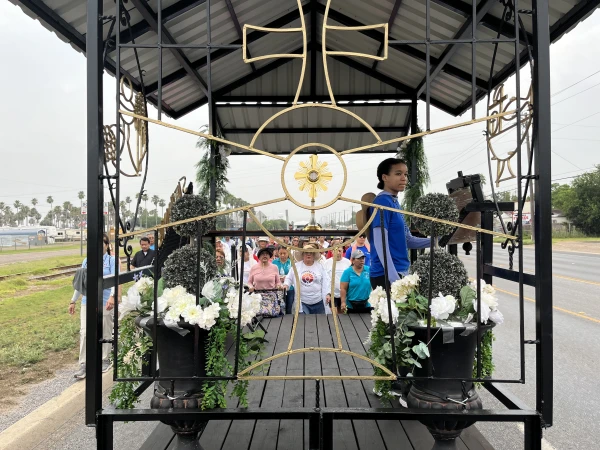
The National Eucharistic Pilgrimage is an unprecedented Catholic effort to walk with the Eucharist thousands of miles across the United States, inviting thousands of people to join along the way as a public witness to the Church’s teaching that the Eucharist is truly the body of Jesus Christ.
Collectively, the pilgrims will walk over 6,500 miles and will traverse four different routes, beginning on opposite sides of the country and meeting in Indianapolis for the National Eucharistic Congress July 17–21.
Beginning on Pentecost weekend, the four blockbuster pilgrimages began simultaneously with large, enthusiastic crowds present at each starting point. Now, nearly two weeks in, the nearly two dozen young people dedicated to walking with the Eucharist say they’ve experienced amazing enthusiasm, hospitality, and reverence among the crowds of people who have met them so far.
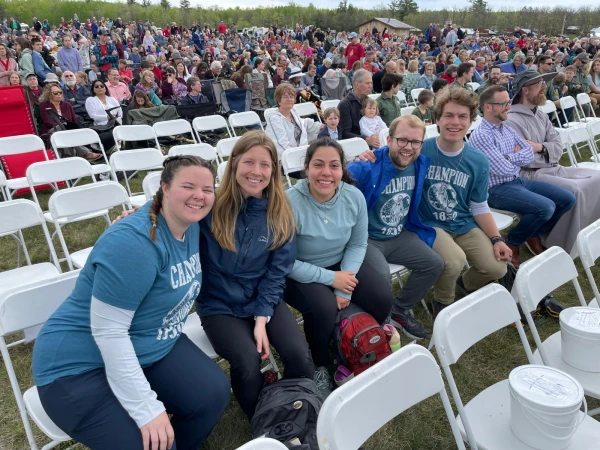
Kai Weiss, a native of Germany now doing graduate studies in Washington, D.C., is traversing the northern Marian Route, which began at the headwaters of the Mississippi in northern Minnesota. He mentioned as a major highlight the four-and-a-half-mile Eucharistic procession from St. Paul Seminary to the Cathedral of St. Paul in St. Paul, Minnesota, which attracted a massive crowd of 7,000 people. He also said it was a wonderful experience to visit the elderly at a nursing home in St. Paul, praying the rosary with the residents in the presence of the Eucharist.
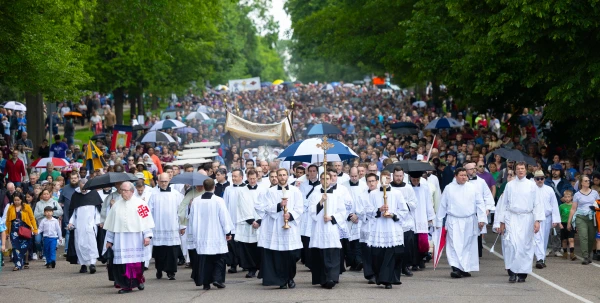
Outside of the large cities, however, Weiss said the crowds have been no less enthusiastic. When the pilgrims processed through the Diocese of St. Cloud — often through small towns of 200 people — crowds were out, church bells were ringing, and first communicants appeared on the side of the road with flowers.
“The enthusiasm in the small towns was shocking,” he said, adding that although the days have been long and exhausting in many ways, he has found that the Lord always provides “some kind of spark” to help the pilgrims keep going.
The eastern Seton Route has so far included stops at New York City’s St. Patrick’s Cathedral, the shrine at the former home of St. Elizabeth Ann Seton, as well as a scenic crossing of the Brooklyn Bridge. Zoe Dongas, a Perpetual Pilgrim on the route, called the moment when Cardinal Timothy Dolan of New York blessed the Statue of Liberty with the monstrance a “setting out into the deep” moment that communicated to her that “Christ wants to bless our country.”
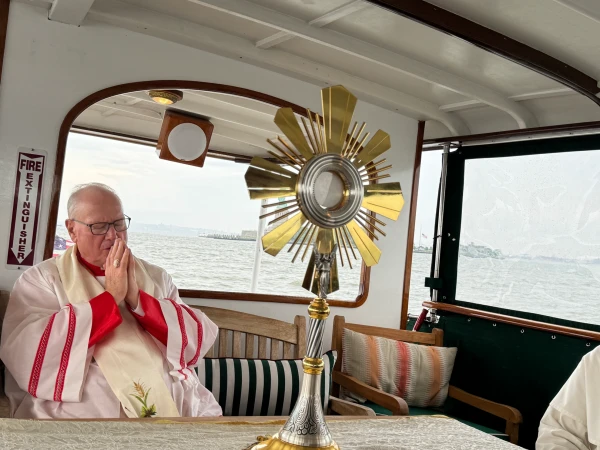
Chas Firestone East, a pilgrim on the western Junipero Serra Route, echoed Weiss’ amazement at the numbers they’ve seen even in small parishes, saying that he didn’t expect the massive welcome the pilgrims received at a rural parish in Oregon. He also said he has heard about at least one conversion connected to the pilgrimages — a photographer working for a secular newspaper who decided to become Catholic after covering the pilgrimage in Lake Tahoe.
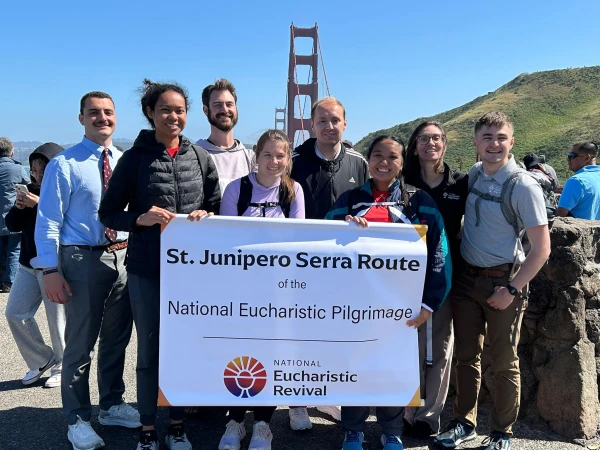
(Story continues below)
The amount of actual walking the pilgrims do each day varies and is often affected by weather or terrain. The Serra Route pilgrims, with by far the longest distance to traverse, have been driving a lot through rural areas, while much of the urban stretches of the pilgrimage have so far been done on foot, often at least 10 miles a day.
Shayla Elm, a fellow Juan Diego Route pilgrim with McCullough, said the enthusiasm they’ve encountered so far shows “how hungry people are to show their faith.”
“We’re giving a lot of Catholics the opportunity to be Catholic, to be Eucharistic, to show that love to the world,” she said.
Catholics throughout the U.S. are encouraged to register to join the pilgrims in walking short sections of the pilgrimages and joining in numerous other special events put on by their local dioceses.
To read more articles about the National Eucharistic Pilgrimage and National Eucharistic Congress, visit the National Catholic Register.






